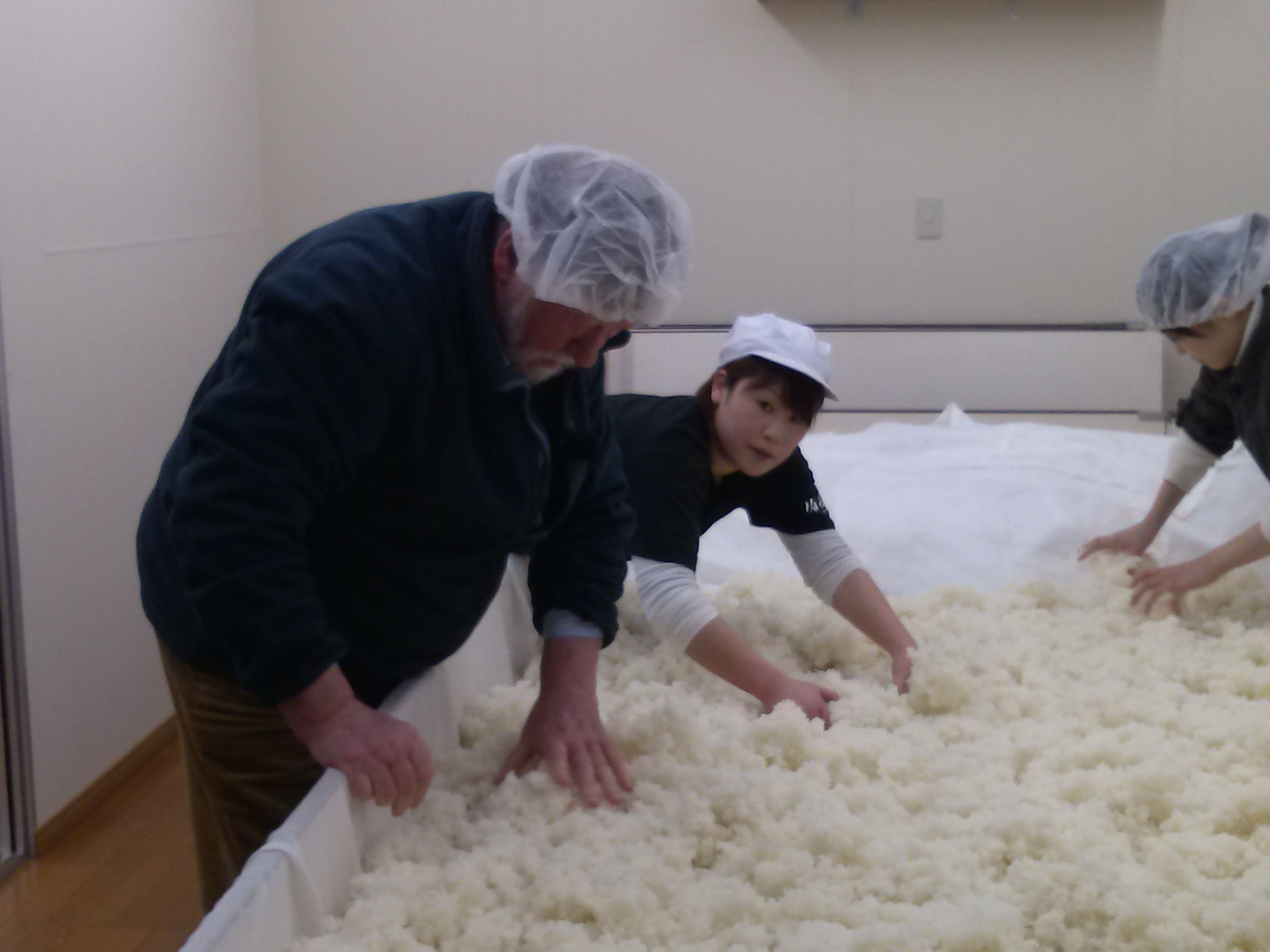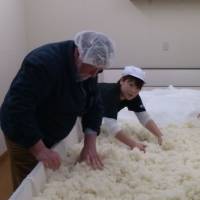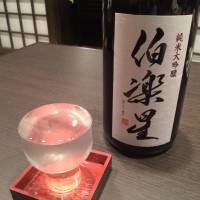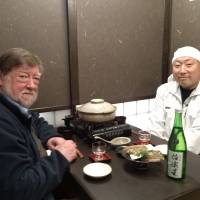Two years have passed since the magnitude-9 Great East Japan Earthquake of March 11, 2011, the devastating tsunami it triggered and the disgraceful and deadly fiasco at Tokyo Electric Power Co.'s Fukushima No. 1 nuclear power plant that followed.
When Japan was in trouble, people all over the world stepped up to offer assistance. Many individuals and groups donated goods and money, while others, with the U.S. Marine Corps to the fore, gave their time and expertise. The global response was heartwarming despite the slow, often bogged down, and frequently nonexistent pace of recovery. Profoundly heartwarming, too, was the uncomplaining stoicism of the people in the northeastern Tohoku region of Honshu who had lost and suffered so much.
Our Afan Woodland Trust was asked by the town of Higashi Matsushima in Miyagi Prefecture to help relocate a destroyed school to nearby densely forested hillocks.
Since then we have conducted environmental surveys, written and presented reports, gone around to all the area's schools, attended more meetings than we can count, talked to everybody from elementary school children to seniors, held seminars, brought together local and international volunteers to begin clearing brush, presented the needs to so many people in Japan and abroad; it all goes on but we face barriers of paperwork and it seems almost impossible to get officials to make any concrete decisions upon which we can act.
The local people want things to happen — children, parents, teachers, old folk and most of the town officials — but we struggle up sandhills and get sucked down into the quicksand of bureaucratic language purposefully created to stymie and confuse the efforts of any outsider to bring about any change at all.
Even with politics supposedly changed recently at the national level, it makes no difference to the coprolitic mind-set of mid-level bureaucrats who stay out of the rain, refuse to do anything and stubbornly persevere with excuses to do nothing until the two or three years they spend at each position before being rotated away is spent.
Don't rock the boat, that's the credo — and for heaven's sake don't let anybody else stand up, or try to paddle, row or hoist a sail.
Japan's unique amakudari (literally, "descent from heaven") system of retiring bureaucrats getting lucrative jobs with companies and organizations they were often overseeing or, indeed, commissioning, not only gives these descending angels plump cushions to land on, but also fuels a system whereby government funds are funnelled to a network of good-old-boy contacts and contracts.
Conversely, if you are not part of the network and if your project doesn't fall into that basket, then the old boys behind the desks do their best to block it.
It is incredibly frustrating, but I will not be ground down. As a Celtic Japanese (Welsh born, Japanese citizenship), I love a good scrap. Fortunately, attempting to influence public opinion and engaging in media guerrilla warfare is easily possible in this country because of our freedom of speech. Television stations and newspapers based in Tohoku ask me to do interviews and programmes, and I get invited to give public lectures. In certain other countries a protester might vanish, be deported or get thrown in jail. Not so in Japan — not yet, anyway.
Despite the bureaucratic and political setbacks, here and there progress is being made by individuals, especially young people who have set out to do something, to innovate and improve things, without any help from the government.
For example, in Kamaishi, Iwate Prefecture, where much of the town and all of its harbor fishery facilities were wiped out by the tsunami, a young couple, Mr. and Mrs. Miyazaki, returned from studying and working in France to rebuild the family's marine-products business.
The harbor facilities were all gone, but the family had an outdated old factory up on higher land which they struggled to refurbish with new equipment — going way out on a limb financially to do so.
Hiroyuki Miyazaki, who qualified as a sommelier in France and worked there in the food industry, had always been bothered by the waste of small, supposedly unmarketable fish taken in trap nets set into the seabed offshore. However, remembering the bouillabaisse he had enjoyed in Marseilles, he got the local fishermen to cooperate and to keep the pomfrets, gurnards, sculpins, blennies, bitterlings and many other diminutive species that would otherwise be tossed aside. All of these fish are perfectly edible and widely enjoyed by local anglers fishing off the docks and rocks.
To make his Tohoku bouillabaisse, Miyazaki guts and cleans a mixture of six kinds of fish, then cooks them first in a huge steam-heated cauldron with olive oil and garlic, to which is added onion paste, a mixture of herbs (in which fennel figures prominently), carrot paste, tomatoes and the lees from producing red wine — a byproduct that is normally thrown away or fed to cattle. This mixture is constantly stirred with a big wooden paddle until thoroughly cooked, and the aroma is simply mouthwatering!
Next, water is added and it's all brought to the boil and simmered for an hour. The resulting mixture is then put through a blender twice to make a rich red potage which is vacuum packed and easily transported and stored. Because the recipe uses whole (gutted) fish, this bouillabaisse is rich in protein, calcium, collagen, minerals and what-have-you. When you reheat it you can add whatever fish, shellfish or vegetables you like — and I'd swear it's as good, or better, than any bouillabaisse I've had in France.
My travels in Tohoku have also taken me to Sanbongi in the Miyagi Prefecture city of Osaki. In that inland town which was badly damaged by the earthquake I met 38-year-old Iwao Niizawa, a fifth-generation sake brewer. The family's original brewery buildings, built in 1873, had been destroyed, and even if they could have been repaired, the insurance companies would not cover the cost.
Undeterred, Niizawa decided to relocate and build a new brewery in the nearby town of Kawasaki. The site is surrounded by forested hills, with no refuse dumps or golf courses or anything else that could taint the groundwater. He bored a 25-meter-deep well and got pure, cold, soft water — ideal for sake-making.
The brewing of sake is more complicated than making beer or wine, as it is created through a process known as "multiple parallel fermentation." Key to this is kōji, a malted-rice bio-activator peculiar to each make of sake — and fortunately, this precious ingredient had survived the collapse of the old building.
On visiting the new factory, I was at once struck by the youth of the workers and by the fact that young women were taking part in the process, something which never used to happen. These young ladies had all graduated from college, where they had studied brewing and fermentation. They were keen and worked hard. It was refreshing to see them there.
Niizawa is striving, and in my view succeeding, in creating a unique sake that is suitable for enjoying with meals, like a light and somewhat dry white wine. Sake is one of the few drinks that can give me a fearful hangover, so since my fifties I have generally avoided it. For me, it is generally just too sweet — but Niizawa's brand, named Hakuraku Sei, was a delightful surprise. It is the best sake I've found so far, and goes well with anything from sashimi to cheese — and sans doute it will go well with Miyazaki's bouillabaisse.
After our huge party in Tokyo on Feb. 20, to which I invited readers in last month's Notebook, I head back to Tohoku to go on tilting at bureaucratic windmills and communing with other souls who are doing their best to rebuild Japan.






